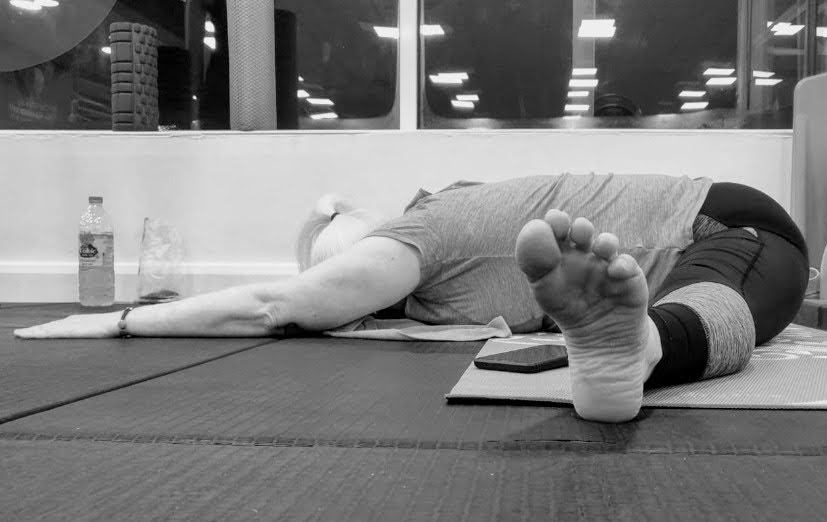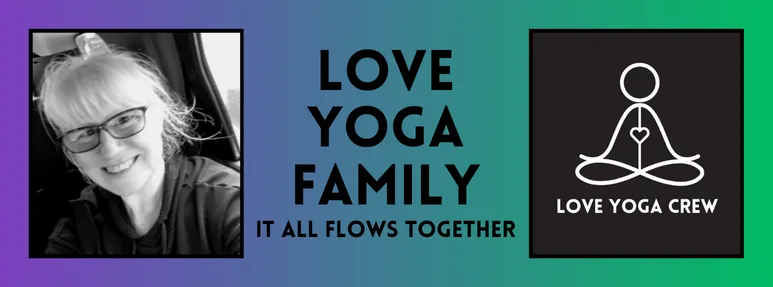
I’m often asked about the different styles of yoga, what they are and why they are beneficial. You can separate yoga into two distinct styles of practice—yin and yang. In Taoist philosophy, these terms refer to the complementary opposites that define our universe—darkness and light, water and fire, stillness and movement. Yin describes experiences that are passive, cool, static and therapeutic and yang refers to those that are dynamic, hot and energetic.
Vinyasa is one of the most commonly recognised forms of Yang yoga. A strong and often dynamic practice that sees us flow from one pose to the next, synchronising breath and movement and generating heat in the body. You may notice that this only works half of the body, the muscular half.
Yin yoga is completely different and designed to work the deeper “yin” tissues, our tendons, ligament, deep fascial tissues and bones. Instead of flowing from one posture to the next, a yin class will have a few poses and we have a longer hold time with a counter-posture in-between. It’s the duration of the hold of the pose and not the intensity that creates the magic. We work alongside gravity to release deeply-held tension, exerting as little muscular effort as possible and prioritising stillness and receptivity over movement and strength.
As yin yoga is a restorative practice, we typically use props to support us in the poses. These include blocks, straps and bolsters. Blocks and straps are inexpensive and well worth the investment. However you can substitute a block with a thick book and a bolster with cushions and pillows when you’re starting out.
All styles of yoga improve your overall sense of wellbeing but yin yoga is particularly effective if you are somebody always on-the-go who finds it hard to relax. If that is you, this technique may be just what you need to give your body and mind the time to properly rest and rejuvenate.
There are both physical and mental benefits to yin yoga that are really quite profound. Though a quiet and peaceful practice, I would argue that it is a fairly extreme practice which makes the effects particularly noticeable.
These benefits include:
Time to relax
Increased flexibility
Reduced stiffness
Greater range of motion
Mental calm and clarity
A reduction in stress and anxiety
Improved focus
Enhanced body awareness
The alleviation of aches and pain
Reduced risk of injury
Psychological balance
More restorative sleep
From a physical perspective, the focus of yin yoga is releasing muscular tension to increase flexibility and improve your range of motion. If you are already fairly flexible, this will mean restoring normal range of motion after exercise and the activities of daily life, staying supple and ensuring that you don’t suffer from unnecessary muscular pain or discomfort.
Passive stretching is so effective as it bypasses the stretch reflex, a mechanism designed to prevent you from over-stretching and injuring the muscle. The stretch reflex is an automatic response, triggered when a muscle is stretched, that causes it to contract. In yin yoga, we are able to override this mechanism by easing into the stretch gradually and allowing muscles to lengthen over the course of several breaths. With this technique and consistent exposure, the body learns to tolerate deeper and deeper ranges of motion.
Students who most benefit from a consistent yin yoga practice are those of us who get stuck in sympathetic “fight or flight” mode—whether that is because we have too many responsibilities, exercise at a high intensity or are just not very good at self-care. And in my experience, this covers pretty much everyone!
The two ways that we create space in the mind are through breathing and choosing what to focus on.
In yin yoga, as in all yoga, the breath is primary. We aim to breathe in and out through the nose throughout the session, deep down into the abdomen. It does, however, become easier with practice and in time, you’ll find that this skill transfers into your everyday life.
During your yin yoga practice, you can drift off and allow your mind to wander but to get the most out of the practice, I recommend that you focus on your breath and the physical sensations in your body. These sessions are an excellent opportunity to improve your body awareness and increase your powers of focus and concentration. This can vary with how easy or difficult you find this depending on how you are feeling day to day and week to week.
In terms of intensity we are looking for nothing too extreme in our yin practice. A 5 out of 10 or less is enough. We’re wanting to reassure the nervous system and to feel comfortable and relaxed. If you notice your breath changing or you are in discomfort, always ease yourself out of the pose, take a few breaths and come back into the pose at a lesser intensity.
Though you can practice yin yoga at any time of day, it’s most beneficial as close to bedtime as possible. In fact most of my yogis in my online classes practice in their pyjamas!
Love Yoga Crew @home online membership offers four hour long weekly yin classes. The recordings of these classes are available in the library along with a collection of longer and shorter classes, yoga for lunch and yoga snacks.
If you would like to join us please use this link https://loveyogacrew.com/join-love-yoga-crew-home/
Or join us every Thursday in person in Strathaven https://bookwhen.com/loveyogacrew/e/ev-s4ri-20240926184500
Hope to share the magic of the mat with you very soon,
Stephanie

Leave a Reply